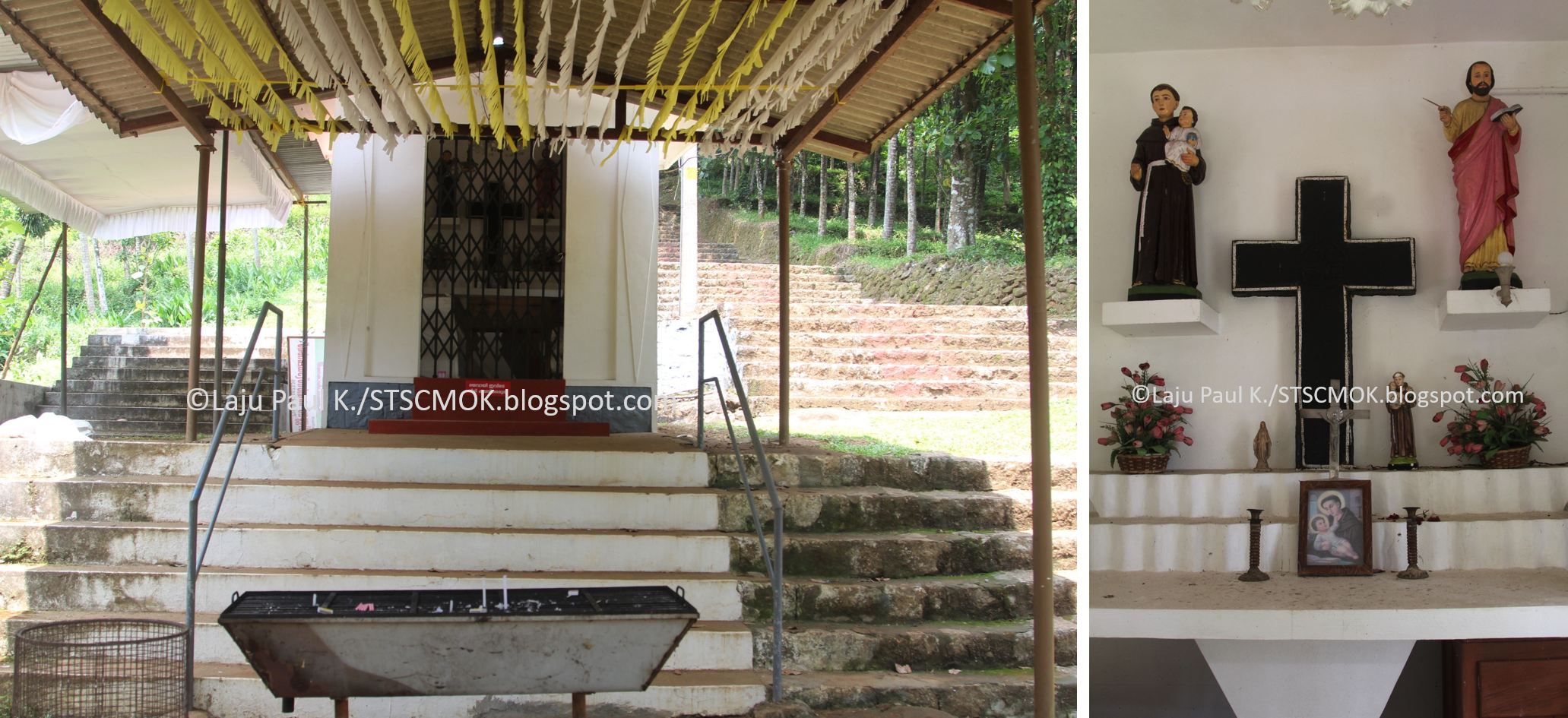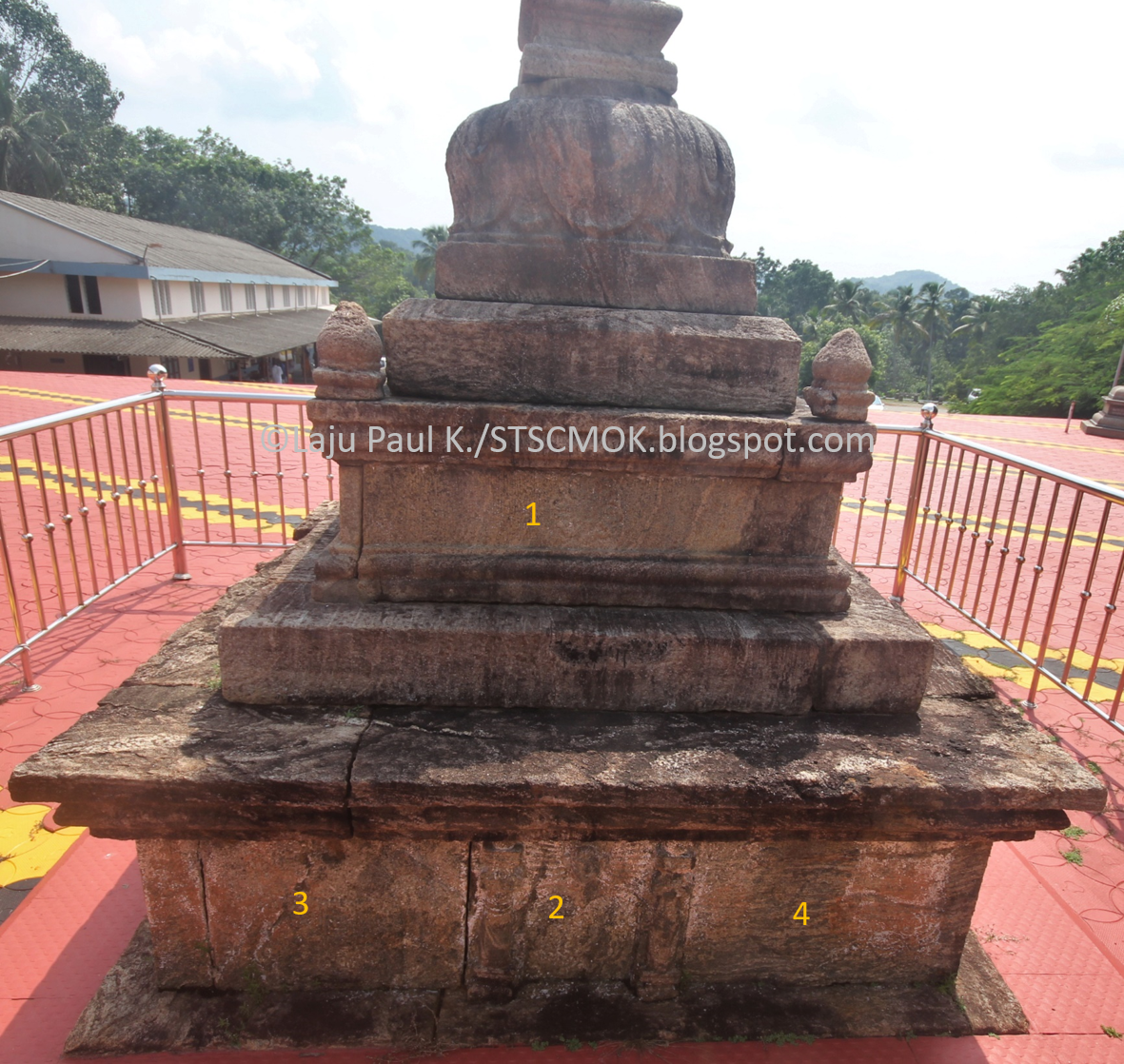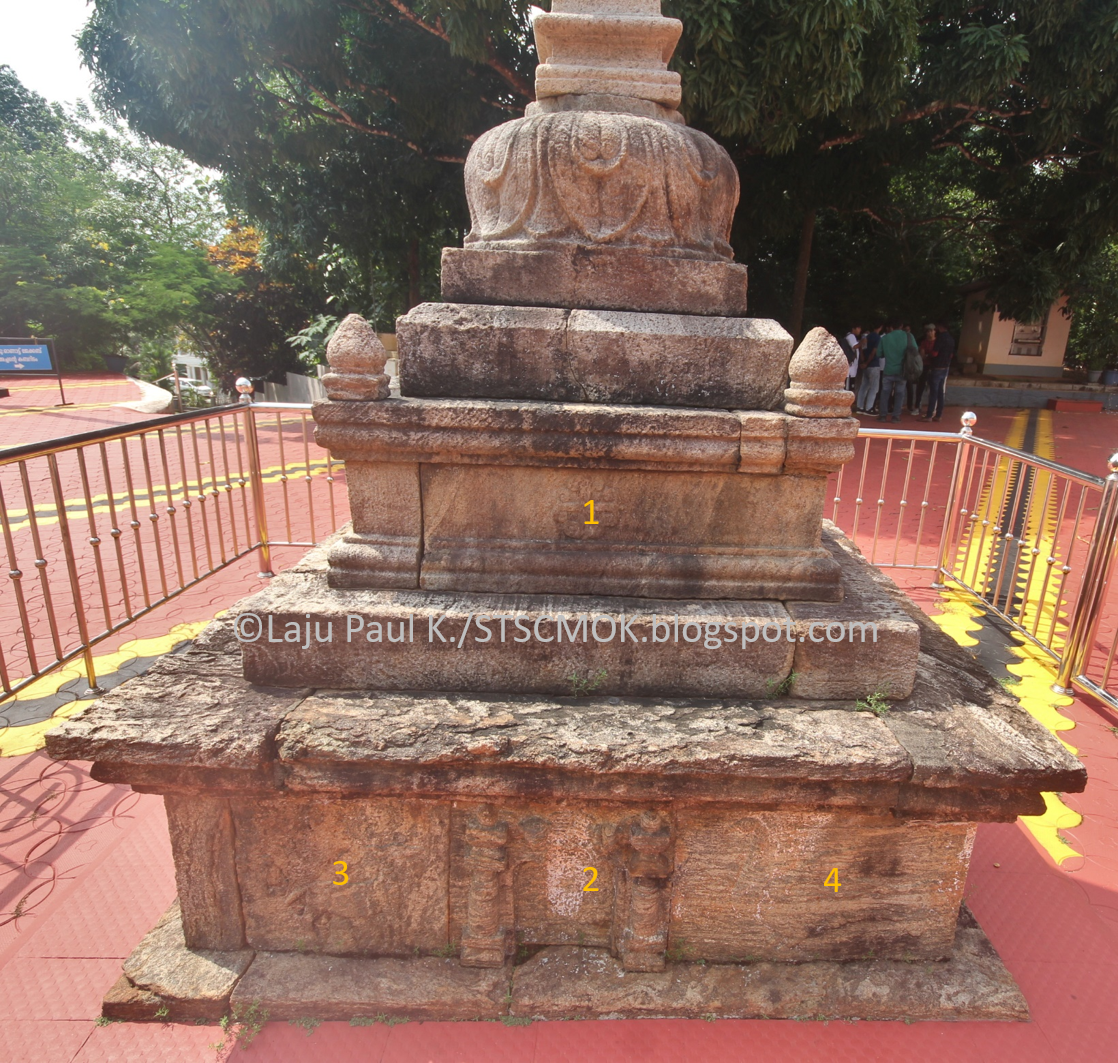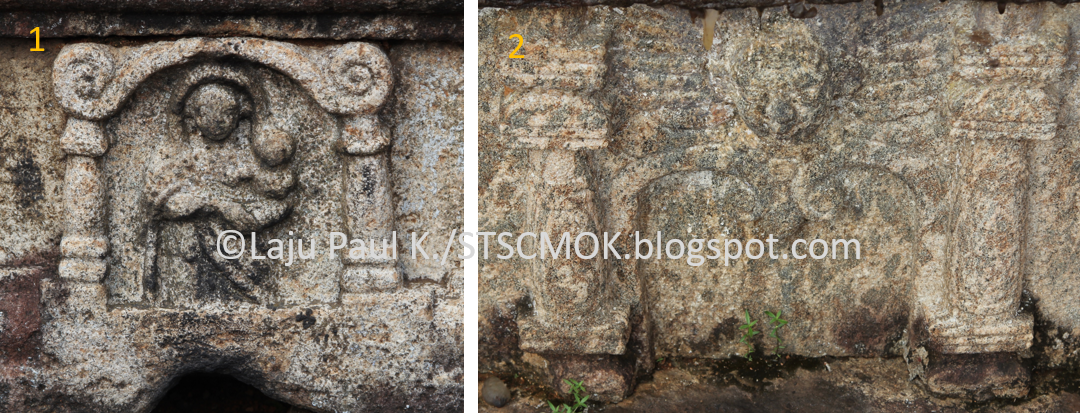In front of Arakuzha church (now Major Archiepiscopal Pilgrim Church) there is an open-air granite cross with a Syriac inscription. The traditional date for Arakuzha church is 999 A.D., and its origin is attributed to a woman named Rathapalli Muthi (or Orathel Muthi) from Mylacombu. There is even a phrase about its origin that it is “A church built for 1000 Mappilas (Christians) in 1000 (A.D.)”. In Jornada (1606), Arakuzha appears as 'Araccre' or 'Aracore' church dedicated to Virgin Mary, indicating a pre-Diamper origin. Throughout this post, I have referred from the authoritative works of Fr. George Kurukkor (2002) and Fr. Abraham Pulickal ed. (1999, 2001-revised edition), and I would strongly recommend them to anyone interested in the detailed history of Arakuzha’s Christian origin. The first church of Arakuzha was built at where the present St Joseph Girl’s High School stands (Kurukkoor, 2002, p. 110; Pulickal, 2001, p. 23), but was shifted to the current location in 1780 (Kurukkoor, 2002, p. 119; Pulickal, 2001, p. 23).
The Cross-Age, History
The finely crafted cross has equal sized upper arms with tapering ends. At the intersection of the cross arms on the west side is the Christian monogram "IHS" referring to the first three letters of JESUS in Greek (IHΣΟΥΣ or Ιησούς). The IHS monograph is also used by the Jesuits in their official emblem. On the east side of the same region is an equal armed continuous Persian cross. Not many would notice a Syriac inscription at the base of the vertical shaft of the cross facing the west side. According to Pulickal (2001, p. 24) the verse can be translated as “Praise to the Lord”. The pedestal has a large dome shaped upper layer designed in the shape of fluted lotus to which the vertical pole of the cross joins. The round layer is followed by two square shaped mouldings. The upper square layer has four horned protrusions arising from each corners (see similar projections in Muthalakodam cross). At the centre of each rectangular panel in this layer are beautiful motifs, the engraving of Virgin and Child is particularly impressive. The lower square layer has a shallow niche on every side. These niches are bordered by pillars and adorned by angel motifs on top. A large angel head is carved on the east and west sides, whereas, the north and south niches have small twin angel symbols. The niches are flanked by motifs mostly faded out over time, but carvings of birds (peacock) and animals (lion, horse) are still traceable. The monogram IHS and the icon of Virgin and Child are definite indications that the cross is a post-Portuguese structure.
Edamanakurishu (Cross), Edamana Church, Malekurishu Church and Malekurishu Chapel
Inside a chapel located south of the main Arakuzha church (see 4 in Map), there is a stone cross considered to be much older than the open-air cross. This small cross is claimed to be a few centuries older than the establishment of Arakuzha church itself (see 1 in Map). The various dates proposed for the cross are A.D. 600, 700, 800 etc. (Kurukkoor, 2002, pp. 121, 125; and here). At the intersection of the arms of the cross is a fine carved motif of a Persian cross. What is interesting is that, the same motif is seen on the intersection point of the arms of the large open-air cross (at the eastern side, see photos attached below). This generates a curiosity whether a motif exists on the other side of Edamana Kurishu concealed by the wall? The cross is believed to be installed at a place called Edamanaparambu, around 1 km north of Arakuzha church on the banks of Thodupuzha River (see 2 in Map). Known as the Edamanakurishu or Vettuparakkal Kurishu, the cross is said to be erected by members of Edamana family who migrated to Arakuzha from North Paravur (Kurukkoor, 2002, p. 67). The cross was an object of special reverence for the early Christians of the region as on both sides of it their ancestors were buried. In fact, Edamanakurishu was the first place of Christian worship in Arakuzha area. The Edamana family cemetery remained functional even after Arakuzha church was built, but presumably the burials declined after 1600, when church cemeteries became frequent (Pulickal, 2001, p. 48). Members of the family visited Edamanakurishu to pay respect to their ancestors by lighting lamps and praying on the site. At these tombs, they performed certain ritualistic practices on their own, without the involvement of priests. However, over the course of time, these ceremonies got degenerated into cult practices with heavy non-Christian elements. The rituals involved practices of keeping tender coconuts at the head of the dead; sprinkling fried rice flakes, tulsi leaves and flowers around dead body; rooster sacrifice (kozhi vettu); cooking chicken; preparing local delicacies and offering arrack for the departed souls (Pulickal, 2001, pp. 47-49; Pulparambil, 2017, p. 46). These tomb rituals are colloquially known as "Kuzhimada Seva"-"the serving of the grave” in literal sense, and the church where it is performed is called a Kuzhimada Palli.
In 1811-1812, a Kurishupalli (Chapel) was built at Edamanaparambu in the name of St. Mathew, and thus, a Kuzhimada Kurishu was raised to the status of a Kuzhimada Palli (Kurukkoor, 2002, p. 125; Pulickal, 2001, p. 50). In 1859, under the order of Bernardino of St. Teresa Baccinelli, the Vicar Apostolic of Verapoly, Edamana Kurishupalli was demolished and Kuzhimada Seva was replaced with ‘Oottu Nercha for 12’, which is more like a festive meal served for 12 (representing the 12 Apostles)-an act of charity (Pulickal, 2001, p. 52). In the same year (1859), the Edamanakurishu (Cross) was transferred to a newly built chapel at the base of nearby Malekurishu Church (Pulickal, 2001, p. 53). The Malekurishu Church on the hillock (see 3 in Map) is believed to be established between 1800 and 1810, there are records that suggest the church existed before 1837 (Kurukkoor, 2002, p. 125; Pulickal, 2001, p. 55). The Edamanakurishu was fixed on the eastern wall of the Malekurishu chapel, but in the course of time, it was concealed beneath the thick lime coatings applied during the white-washing of the walls. The cross was rediscovered in 1973 (Kurukkoor, 2002, p. 125), and today it is well maintained and properly displayed inside the chapel. Although Kuzhimada Seva was officially banned by the church, some people (mostly non-Christians) continued to practice the rooster sacrifice in the forest near Malekurishu until recently (Pulickal, 2001, p. 64).
Along with the Edamana Cross, a statue of St Mathew was also taken out of the Edamana Kurishupalli before it was pulled down in 1859, and was placed in Arakuzha church. When this statue was brought to Edamanaparambu is unknown. After the demolition, the Edamana Kurishupalli gradually faded from the memory of people and even the site was forgotten. In 1973, ruins of the doorstep (stepping stone) of the old church was accidentally discovered when a Jack-fruit tree growing on the site was felled. It was soon decided to build a small chapel on the very spot where once stood the Edamanakurishu (Pulickal, 2001, pp. 53-54). The new Edamana Kurishupalli was consecrated on 23 December, 1973 in the name of St. Mathew (Kurukkoor, 2002, p. 126; Pulickal, 2001, p. 54). The date written on the church, 21 September 1973 corresponds to the feast day of St Mathew. Apparently, the old statue of St Mathew is brought back to Edamana Kurishupalli where it originally belonged. There is also a statue of St Mathew at the Malekurishu chapel now, probably a different one placed there in the 1930s (Pulparambil, 2017, p. 50).Nevertheless, the Edamana Cross is still preserved inside the Malekurishu St. Antony Chapel.
Summary
To avoid the confusion over the names and dates used here, let me summarize the four worshipping places of Arakuzha with their patron saints, traditional foundation and rebuilding dates:
1) Arakuzha, St. Mary Forane Church (999-built, 1780-rebuilt) – location of the open-air granite cross
2) Edamana, St Mathew Kurishupalli (600-800-Edamanakurishu installed, 1811-1812-Kurishupalli built, 1859-demolished, 1973-rebuilt) – current location of the statue of St Mathew
3) Malekurishu, St Sebastian Church (1800-1810-built)
4) Malekurishu, St Antony Chapel (1859-built)-current location of the Edamanakurishu (Cross)

Arakuzha, St Mary (Main Church)-Exterior & Interior 
Edamana Kurishupalli, St Mathew (Chapel)-Exterior & Interior
Malekurishu, St Sebastian (Church)-Exterior & Interior 
Malekurishu, St Antony (Chapel)-Exterior & Interior
The Syriac Inscription on the Open-Air Granite Cross The yellow arrowhead marks the position of the inscription on the cross.
The yellow arrowhead marks the position of the inscription on the cross.
The Arms of the Cross and the Carved Motifs at the Intersection
The Horn-Like Protrusions on the Pedestal
The East Pedestal and the Enlarged Views of the Carved Motifs on the Panels
The West Pedestal and the Enlarged Views of the Carved Motifs on the Panels
The North Pedestal and the Enlarged Views of the Carved Motifs on the Panels
The South Pedestal and the Enlarged Views of the Carved Motifs on the Panels
The Edamanakurishu (Cross) at the Malekurishu, St. Antony Chapel See the Persian Cross at the intersection of the arms of the cross
See the Persian Cross at the intersection of the arms of the cross
Statues of St Mathew at Edamana, St Mathew Chapel (left) & Malekurishu, St Antony Chapel (right) The statue of St Mathew at Edamana Kurishupalli (left) is the old specimen.
The statue of St Mathew at Edamana Kurishupalli (left) is the old specimen.
References
Kurukkoor, George (2002)-Oru Vamsavum Pala Nadukalum Part I
Pulickal, Abraham, ed. (2001-rev. ed.)-Sahasrabdhi Akhoshikkunna Arakuzha Edavaka, Charithrathinte Eadukalil
Pulparambil, John (2017)- The Mirror of My Self
Official Website of St.Mary's Major Archiepiscopal Pilgrim Church-www.arakuzhachurch.in
An Early Photograph of Arakuzha Church and the Open-Air Granite Cross  Photo Credit: Left-Cover Page of Pulickal, Abraham, ed. (2001-rev. ed.)-Sahasrabdhi Akhoshikkunna Arakuzha Edavaka, Charithrathinte Eadukalil; Right-Photograph mine taken on 2015. As you can see that the front porch (2) is a later addition and the facade has also been altered, especially the upper layer (1).
Photo Credit: Left-Cover Page of Pulickal, Abraham, ed. (2001-rev. ed.)-Sahasrabdhi Akhoshikkunna Arakuzha Edavaka, Charithrathinte Eadukalil; Right-Photograph mine taken on 2015. As you can see that the front porch (2) is a later addition and the facade has also been altered, especially the upper layer (1).












Thank you for sharing very informative historical facts.
ReplyDeletePlease feel free to visit my blog on Krupasanam!
Krupasanam Marian Shrine Udambadi